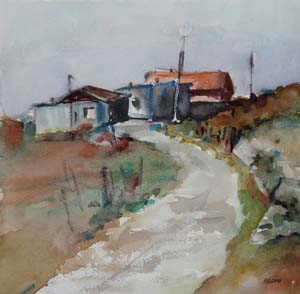Nancy Schon Sculpture “Reach for Knowledge” Unveiling at the Wellesley Library
In case you missed the unveiling of “Reach for Knowledge”
Join the WSA in welcoming new exhibiting member Kitt Shaffer. It is hard not be impressed with the breadth of mediums and subject matter Kitt uses in her artistic endeavors, from ceramics to oils, landscapes to the figure. To see more of her artwork, visit her WSA artist page.
Welcome to the WSA Kitt, we look forward to meeting you and seeing more of your artwork!
Please join the WSA in welcoming new exhibiting member Leah Morris. Her atmospheric paintings evoke a peaceful sense of place, often with carefully chosen pops of color. To see more of leah’s paintings, visit her WSA artist page.
Welcome to the WSA Leah, we look forward to meeting you and seeing more of your artwork!
The WSA is happy to welcome new exhibiting member Darrell Smith, our only woodblock printer. Inspired by Lazzell, Darrell captures both nostalgic and contemporary images, with an astute eye for color and design. To see more of Darrell’s artwork, visit his WSA artist page.
Welcome to the WSA Darrell, we look forward to meeting you and seeing more of your artwork!
The WSA is happy to welcome new exhibiting member Nelson Hammer. Self taught, Nelson rediscovered his love and talent for painting less than a decade ago. He was drawn to the lure of nature, particularly birds, but has recently expanded his subject matter to include landscapes. Nelson’s highly rendered watercolors, capture the intricate patterns of nature and the subject at hand. To see more of Nelson’s paintings, visit his WSA artist page.
Welcome to the WSA Nelson!
For most artists and art lovers the impact of art is well known. That knowledge is now being tapped in healthcare to help both healthcare workers and patients alike. The Center for Visual Arts in Healthcare at Brigham & Women’s Hospital focuses on visual arts education for healthcare workers and is the first of its kind within the Brigham & Women’s Hospital in Boston. The Center, based in the Department of Medicine at BWH, trains healthcare workers using visual arts methods that build essential skills of a humanistic provider, including empathy, teamwork, respect, curiosity, and cultural responsiveness. Learn more about this amazing program.
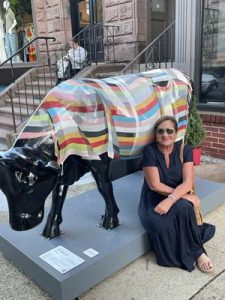
After several months of planning the WSA’s 90th Anniversary Celebration took place during the Wellesley Wonderful Weekend at the end of May. Despite the heavy rain on Saturday which forced the cancellation of a couple of events, all of the events were salvaged. It was a big disappointment that the show at Simons Park was cancelled, but an unexpected opening in the Wakelin Room at the Wellesley Free Library for the summer is the perfect place to share the “Celebrating 90 Years of Art and the Next Generation of Artists” show. The show/sale is also online until September 7. Voting for the People’s Choice Award (online) will continue through the summer.
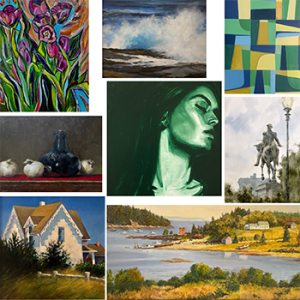
Everyone loves a parade and the 55th Annual Wellesley Veterans Parade was no different. The WSA was a parade honoree and as such was given a special car complete with signage and candy to throw along the route. Our parade volunteers Kristin Conant (who carried her father’s military uniform in her backpack), Donna Ticchi, Nancy Treves, Yvonne Unger and Nancy Present Van Broekhoven represented the WSA.
The plein air painting took place throughout the weekend with nine WSA members participating as well as three non members. Despite Saturday’s afternoon downpours, everyone found time to paint and capture some iconic scenes in Wellesley Square. The charity auction of the paintings at the Page Waterman Gallery several days later proved to be a lot of fun. Even as many paintings were still wet, the attendees enthusiastically bid with the help of the fabulous auctioneers Dan Lothian (Former CNN White House Correspondent) and Blake Lothian (NASCAR Driver) , and Bob and Deborah Brown (Swellesley Report). An enormous thanks to everyone who made the first “Paint the Town” event a great success.
And finally, the weather really delivered for the town picnic on Sunday evening. Bob and Diane Savage ensured the WSA was well represented for the town picnic on Sunday evening. A debt of gratitude is owed to both Bob and his wife Diane for setting up the WSA table and manning it and chatting with prospective members. The WSA history was on full display along with a few paintings of current members.
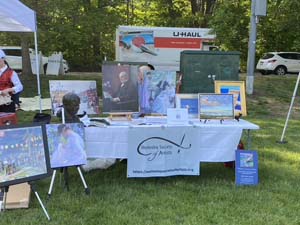
Susan Magsamen, Executive Director, International Arts + Mind Lab, Pedersen Brain Science Institute, Johns Hopkins University, co-authored with Ivy Ross, the recently published book “Your Brain on Art” based on their research. Magsamen has spearheaded a transformative movement to bring the arts to communities and institutions in the hopes of strengthening our well being. Learn more.
Some more news to explore…
How a blend of science and art is improving neurological health
June Artist of the Month
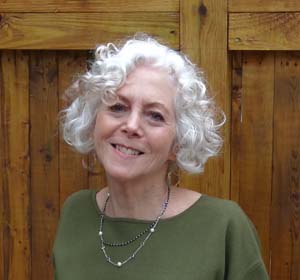
Meet Nancy Levin
Artist Nancy Levin grew up in Newton, Massachusetts and “while the other girls went to ballet, (her) mother took her to the MFA.” She created art in any form whenever possible. She took all the art classes offered at Newton South High, and after pursuing other more practical studies, she graduated as a Studio Arts Major from the University of Vermont. After college, Levin enjoyed a career in graphic design but then, looking for a new challenge, she obtained a Master’s Degree in Business. She also became a BCG-Certified Genealogist® and has published journal articles and written chapters for reference-books in her field.
Finding success outside of graphic design, Levin missed making art and started taking watercolor classes at the Danforth Museum School with Nan Rumpf. She began falling in love with watercolor. Since then, she has taken classes at New Art Center, Newton Continuing Education Program, Concord Art, and Elm Bank. Gary Tucker and, more recently, Martha Wakefield have been other impactful teachers. While continuing to learn, Levin became an active member of numerous artist societies including the WSA, Newton Art Association, Newton Watercolor Society, New England Watercolor Society, Rhode Island Watercolor Society, Needham Art Association, and Natick Art Association. Art continues to take her on a journey; “I am falling into wherever I am going. I’m having a delightful time.”
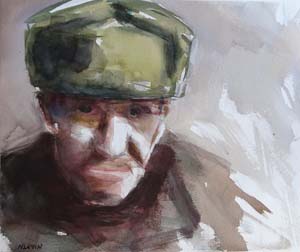
Levin also participates in workshops whenever possible. Probably most influential in her recent life have been numerous plein air workshops with David Dewey in Owls Head, Maine and online through Zoom. Under his auspices, Levin has met interesting and encouraging artists, who help her to “free (her) visual voice and become more open/looser in (her) work.” She has developed a supportive network of fellow artists: “I’m in an exciting place: I’m working with a group of people who are as comfortable to me as a pair of soft and worn slippers.” Boosted by the warmth of her peers, she has become more confident in her work. The artist has exhibited at both Newton and Natick Open Studios.
Levin reflects, “I’m allowed to look at all possibilities now…when the paint starts flying, the colors come out” and she chooses a direction to follow. One day she decided to paint a line of yellow school buses seen through the trees. The painting turned into a simple landscape where bright shapes displaced the buses and the trees disappeared. Levin realizes, “It worked as what I was trying to say was all about color.” She continues to paint “with exuberance and for the most part outside the lines.”
